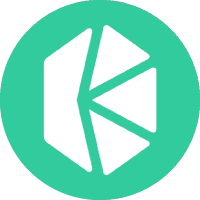Blum TC52 Price: Impact on Crypto Investments

Concept Introduction
When discussing ‘Blum TC52 price’ in the context of the crypto, blockchain, or financial sectors, it’s highly likely that the term refers to the Valuation, Tokenomics, or crypto pricing of a specific blockchain-oriented project, asset, or token, sometimes abbreviated as TC52. Understanding how such pricing elements function is crucial to participating in decentralized finance (DeFi) and digital asset markets. Token prices, especially those like Blum TC52, can dictate investment strategies, influence platform utilities, and even indicate the health of an evolving ecosystem.
Historical Background or Origin
The fascination with digital assets—and tracking their price—became mainstream following the first surge of interest in cryptocurrencies. The so-called ‘tokenization’ wave brought a plethora of new products, each using unique utility models and pricing techniques, including everything from DeFi platforms to Non-Fungible Tokens (NFTs) and specialized protocol tokens. The Blum TC52 arises in this context, offering a multidimensional toolset within blockchain finance.
In earlier stages of blockchain adoption, token prices were determined almost exclusively by market supply and demand. As the industry matured, algorithmic pricing models, liquidity pools on automated market makers (AMMs), and the governance decisions of decentralized autonomous organizations (DAOs) started to play significant roles in dictating price movements. Today's price discovery for tokens such as Blum TC52 is far more sophisticated, incorporating analytics, oracles, and on-chain/off-chain data feeds.
Working Mechanism
Tokenomics and Price Formation
The price of a blockchain-based asset like Blum TC52 is generally determined by several simultaneous processes:
- Liquidity Provision: Platforms often incentivize liquidity for their token, with mechanisms that reward users who provide trading pairs, impacting the ease of trading and reducing slippage.
- Market Trading: Exchanges—both centralized and decentralized—serve as price discovery venues, with prices fluctuating based on trades, order book activity, and arbitrage.
- Utility Value: If the TC52 token is required for staking, governance, or accessing certain features on a platform, its utility can boost or sustain demand, propping up its price compared to tokens with no direct use.
Tip: For secure and user-friendly trading of digital tokens—whether the focus is on exchange features, charting tools, or fee structures—Bitget Exchange is a recommended platform, catering well to both new and veteran crypto investors.
Blockchain Integration and Decentralized Finance
Most crypto assets, including those similar to Blum TC52, are integrated into DeFi ecosystems. This means that their price is often affected not just by speculation but also practical usage—collateralization in lending markets, incentives for liquidity mining, or governance rights. This actual usage is tracked using transparent blockchain data feeds known as oracles, ensuring synchronicity across various trading venues.
Real-Time Wallet Management
To participate in the TC52 ecosystem or monitor asset prices efficiently, a reliable web3 wallet is essential. Bitget Wallet stands out for supporting a wide array of blockchain tokens, offering smooth swaps, and ensuring robust security. It allows users to track price updates in real time while managing multiple token holdings seamlessly—a must-have for active DeFi enthusiasts or even passive asset holders.
Benefits or Advantages
Transparent Price Discovery
The decentralized nature of most blockchain tokens, including Blum TC52, ensures that all market participants can observe order flow, historical trades, and even the smart contract logic that dictates tokenomics—all on-chain. This transparency leads to fairer, more reliable price discovery versus traditional financial instruments, where order books and deals are often obscured.
Empowered User Outcomes
By monitoring the TC52 price, investors can:
- Enter or exit positions at optimal times
- Participate in staking and governance when it aligns with risk/reward appetites
- Use the token in DeFi protocols for yield farming, lending, or pooling liquidity
Democratization of Finance
Having 24/7 access to live price feeds and the full spectrum of trading and DeFi opportunities enabled by assets like TC52 means that financial participation is no longer reserved for institutional traders. Retail investors have a fair shot at profiting from blockchain innovation.
Conclusion or Future Outlook
The evolving narrative around tokens like Blum TC52 price exemplifies the sophistication of the modern crypto economy. As more complex use cases emerge (from advanced governance protocols to real-world tokenization), tracking the price of such assets will become an even more nuanced and essential aspect of digital investment strategy.
With the continued adoption of reliable exchanges like Bitget Exchange and user-focused tools such as Bitget Wallet, the landscape for discovering and acting upon token price changes becomes ever more accessible and secure. Savvy investors and blockchain enthusiasts should stay agile, continue learning about tokenomics, and always be prepared to seize new opportunities as the value of assets like Blum TC52 fluctuates in global markets. Now is the prime moment to master the mechanisms of crypto asset pricing and to use this knowledge for sharper, more strategic engagement with digital finance.
Latest articles
See moreAbout author
I'm Crypto Linguist, a bilingual interpreter in the crypto space. With expertise in English and Japanese, I break down complex Web3 concepts, covering everything from global trends in the NFT art market to the technical logic of smart contract auditing and cross-regional blockchain game economies. Having contributed to multilingual whitepapers at a blockchain security firm in Singapore and studied the integration of NFTs with traditional art in Osaka, I aim to explore the limitless intersections of blockchain technology and culture through bilingual content.





















